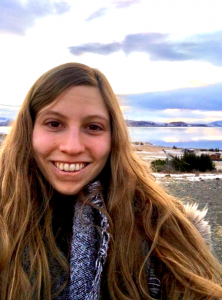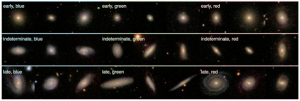Alicia is thrilled to be part of the SURP program, studying Milky Way-like galaxies in simulations alongside Dr. Ted Mackereth and Dr. Josh Speagle. Having concurrently completed a B.Sc. in Mathematics with a minor in Physics and a B.Ed. at Brock University, Alicia is now upgrading her physics minor to a major and is heading into her final year of undergraduate studies. She is originally from Burlington, Ontario and now lives in the Niagara region.
What made you decide to participate in SURP?
I have always wanted to spend my life studying math and science, and SURP has given me the invaluable opportunity to be an active member of the scientific community through new and exciting original research. SURP also holds special importance to me because, although Brock Physics has been wonderful to me, unfortunately the university does not yet have an astronomy & astrophysics program. I am very passionate about astrophysics and SURP has been an amazing introduction into this world!
What is your favourite thing about SURP?
It is difficult to choose only one! I have loved that every day has been about constant learning – whether the subject is our Milky Way Analogues, astronomy as a whole, coding, or other professional skills – in an environment full of people with the same interests as me. I am so grateful to be immersed in a group of such kind, enthusiastic, and supportive colleagues who encourage my love of learning, especially my supervisors Ted and Josh who consistently go out of their way to enhance my skills and understanding. SURP has allowed me so much growth academically, professionally, and personally.
Can you tell us about your research project?
Our research looks at galaxies from the EAGLE suite of cosmological simulations and their properties as they form and evolve over time and space. We select “Milky Way Analogues” from the simulations based on observed properties of the Milky Way, and examine their likeness with respect both to the remaining galaxies in the simulation and to our observed values for the Milky Way. Through our research, we hope to understand what makes a galaxy “typical” and to refine our definition of “Milky-Way-ness”.
Can you explain how SURP has perhaps been different from your undergrad work?
My undergraduate work has been helpful in giving me a thorough background in math and physics that I can now apply to my own research in the SURP program. Most of my undergrad courses focused mainly on developing foundational skills and knowledge regarding a wide range of topics, but SURP has allowed me the opportunity for more engaged, more involved, and more directed learning about a subject that I am deeply interested in and that is currently relatively unexplored thus far. SURP has been an incredible supplement to my undergraduate work.
What are your plans for the future?
After completing my undergraduate studies, my plan is to start grad school in pursuit of a PhD. My ultimate career goal is to become a professor of astrophysics. Another passion of mine is teaching, and I have even taken some time off between degrees to teach secondary school math and science. Becoming a professor would ideally allow me to exercise my love for astrophysics both through research and teaching.
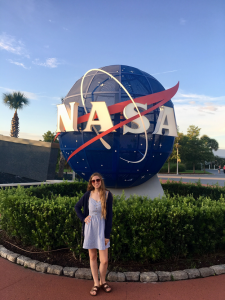
At NASA. Credit: Alicia Savelli.
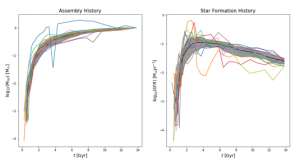
The assembly histories (left) and star formation histories (right) of the simulated galaxies overlayed with the plots of our top 10 Milky Way Analogues.Credit: Alicia Savelli.
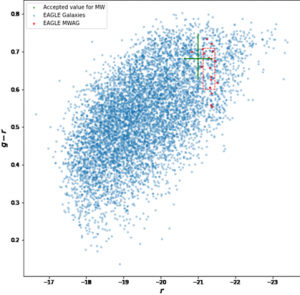
A plot showing the colour of the Milky Way (green) and our Analogues (red) against the other galaxies in the simulation (blue). Credit: Alicia Savelli.

